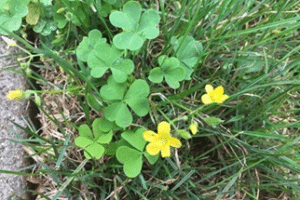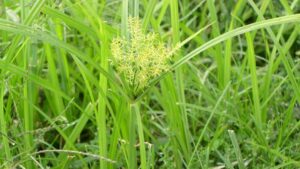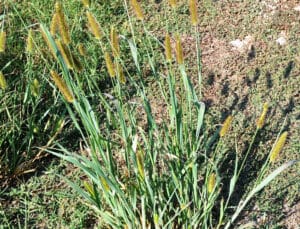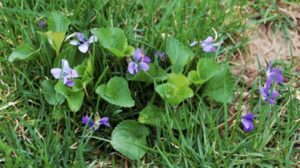Lamium purpureum L.
Description
It thrives in moist soils and full sun to moderate shade. Dead nettle plants produce upright stems with red and purple leaves and spread quickly to form patches during periods of cool weather in early to mid-spring. Contrary to its common name, this weed does not belong to the nettle family and does not cause skin irritation by “stinging”. Dead nettle is a member of the mint family (Lamiaceae) and looks similar to some other species in this family, especially henbit (Lamium amplexicaule L.).
Life Cycle
Dead nettle is usually classified as a winter annual. Young plants generally emerge following seed germination in fall, live through the winter as seedlings, and grow and mature rapidly during early spring. Leaves are produced on upright stems that may arise from horizontal stems (stolons) that grow along the soil surface and form patches. Dead nettle is most conspicuous in April when it begins to produce pinkish-purple flowers. Flowers produce seed in late spring and plants begin to wither and die back as temperatures rise in early summer.
Identification
Dead nettle tends to grow in patches and is easily recognized by its distinctive red- or purple-green leaves that are densely clustered at or near the top of the stem. Leaves arise from upright four-sided stems (square in cross-section) that tend to extend above the turf canopy. Individual leaves have short petioles and are broadly chordate or somewhat triangular with serrated margins. Leaf surfaces are covered with fine hairs (trichomes), resulting in a fuzzy appearance, and have a net-like system of indented veins. Flowers of dead nettle are tubular in shape, about ½ inch in length, with protruding upper and lower lip-like appendages. Flowers arise slightly above leaf axils at the tips of plants and take on a pale pinkish-purple color with a few purple streaks and spots.
Cultural Control
Dead nettle infestations can be reduced by frequent mowing at typical heights of cut used for lawns (2 to 3 inches) in early spring to remove flower stems, increasing turf density through proper fertilization practices, and selection of turfgrasses that are well-adapted to site conditions. This weed can be controlled with various postemergence herbicides; however, dead nettle plants often die back in mid-late spring before broadleaf herbicide applications are made.





